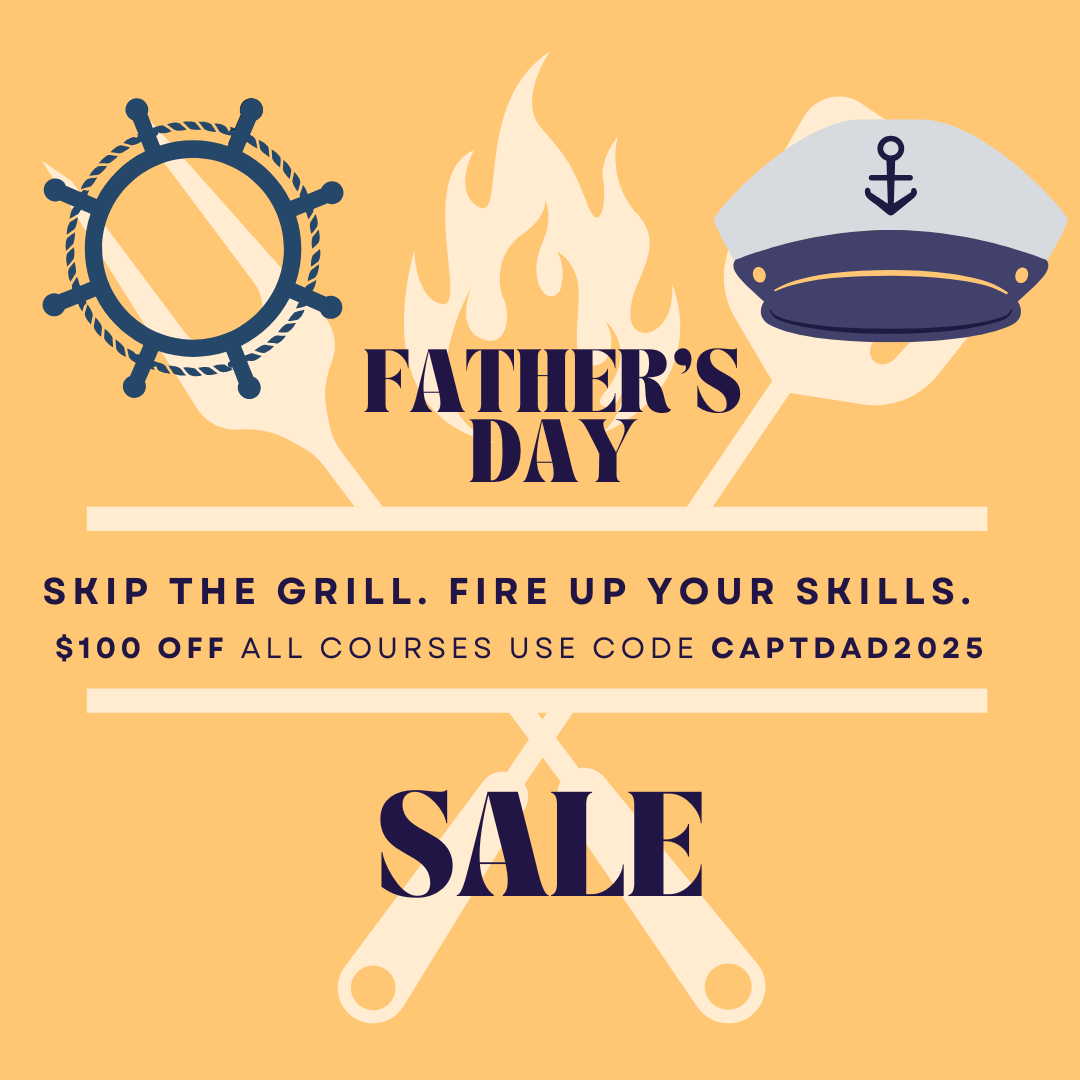Thinking about getting your U.S. Coast Guard captain’s license? Whether you want to run charters on your personal boat or operate a larger commercial vessel, you’ll need the right license to do it legally and professionally. The big question is:
Should you get the OUPV (6-Pack) license or the Master Captain’s License?
Let’s break down the difference and figure out which one makes the most sense for your goals on the water.
OUPV (6-Pack) License: The Charterboat Starter License
If you’re planning to carry up to six paying passengers on your own boat—or any other uninspected vessel—this is your license.
The OUPV stands for Operator of Uninspected Passenger Vessels, but most people just call it the 6-Pack license. It’s what you need if you want to run fishing charters, sunset cruises, water taxi runs, or other small operations on vessels that aren’t Coast Guard–inspected.
There are three OUPV license routes:
- Inland – Covers rivers, lakes, bays, and sounds.
- Great Lakes and Inland – Includes the Great Lakes in addition to inland routes.
- Near Coastal – Covers inland and coastal waters out to 100 nautical miles offshore.
✅ Perfect for small boat captains running private charters on U.S. waters.
Master Captain’s License: For Inspected Vessels and Larger Operations
Want to run a ferry, harbor tour boat, whale watch, or any other inspected vessel carrying seven or more passengers? You’ll need a Master’s License.
The USCG Master Captain’s License allows you to operate both inspected and uninspected vessels. Your Master license will be issued at one of three tonnage levels, based on your sea time:
- 25 GT
- 50 GT
- 100 GT
The course is the same for all three—the difference lies in your past sea time and vessel size experience. You’ll also choose a route:
- Master Inland: For lakes, rivers, and bays
- Master Near Coastal: Expands your authority up to 200 nautical miles offshore
✅ Best choice if you’re aiming to scale your operation or captain larger commercial vessels.
Sea Time Requirements: What Counts, What Doesn’t
To qualify for either license, you’ll need to document 360 days of sea service—90 of which must be within the last 3 years.
For Near Coastal Licenses:
You must have at least 90 days “outside the boundary line” (open coastal waters). This includes:
- Coastal runs from the U.S. Virgin Islands to Grenada
- Deliveries along the Eastern Seaboard (past New York)
- Offshore sailing outside Narragansett Bay, Block Island Sound, etc.
Time inside bays, inlets, and harbors usually qualifies as inland.
What about old boats or deceased owners?
If you can’t get signatures on your service records from the vessel’s original owner (e.g., a deceased parent), an heir, estate executor, or co-owner can sign off. You may also contact state agencies for registration records.
Do small boats count?
Yes. Even small boats like Hobie Cats and RIBs can qualify, though they’ll contribute to a lower gross tonnage rating.
Can I Switch from OUPV to Master Midway?
No, unfortunately. The U.S. Coast Guard requires that course hours be distinct and logged separately. If you think you may end up wanting a Master’s license, you will be much better off just starting that course.
There’s also a workaround:You can finish your OUPV license and add a Master Upgrade Course right afterward. That way, you’ll cover the same material again (e.g., Rules of the Road) and take both exams together—no wasted effort, just a few extra hours of study.
Required Confident Captain Course Materials
To take either course, you’ll need:
- TR training charts: 12221TR, 12354TR, 13205TR
- Parallel rulers (15-inch, Weems & Plath recommended)
- Dividers (Featherlite preferred)
- Chapman Piloting and Seamanship (any recent edition)
- A mechanical pencil and a good eraser
What to Expect on the Test
All of our tests are written and designed by Captain Kent. They are not USCG Questions. They are “Capt. Kent” questions. Both tests are divided into modules. You can retake only the ones you don’t pass.
OUPV / 6-Pack Test:
- Rules of the Road – 50 Qs, 90% required
- Navigation General – 50 Qs, 70% required
- Plotting – 10 Qs, 90% required
- Deck/Safety – 70 Qs, 70% required
Master 100 GT Exam:
- Rules of the Road – 50 Qs, 90% required
- Navigation General – 50 Qs, 70% required
- Plotting – 10 Qs, 90% required
- Deck General – 50 Qs, 70% required
- Safety – 50 Qs, 70% required
CPR, First Aid, Drug Test, and Physical
Before submitting your final application to the Coast Guard, you’ll need:
- A DOT drug test (we recommend Concentra)
- A USCG physical exam
- CPR and First Aid Certification (Heartsaver from the American Heart Association is ideal—must include the written exam and USCG certificate)
Final Word: Which License Should You Choose?
If you’re chartering your own recreational boat and carrying six or fewer people, get the OUPV license.
If you want to expand operations, carry more passengers, or operate inspected vessels, go with the Master’s.
Still not sure? We’re happy to help. This is what we do—train mariners, help them grow, and get them licensed with confidence.

